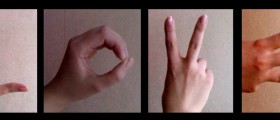
People usually do not know how to behave when they are in contact with deaf people. Namely, other usually perceive these people as deprived of language and communication per se. However, this is a wrong attitude since these people have numerous different ways of “speaking” like sign language, gestures etc. Therefore, if a person is unable to hear correctly, even with the help of hearing aids, he/she is not deprived of the ability to communicate. On the contrary, there is a whole new world of communication available for him/her.
A World of Languages
Many factors influence the choice of the communication medium for deaf people. Namely, the degree of their hearing impairment, the community they are a part of, their own social background and many other aspects are involved in this process. In fact, the following methods were developed due to these factors in the first place.
Means of Communication of Deaf People
Sign language is considered to be the most popular method of communication between people with hearing impairments. Moreover, people who possess the sense of hearing may learn sign language and join in the conversation. Here, letters and whole concepts are converted into hand signals, allowing deaf people to convey messages without problems or constraints. There are several variants of this sign language, mostly based on the geographical location of the people using it, giving the language a cultural perspective as well.
People who use sign language may combine their way of communicating with lip reading. On the other hand, others may lip read and respond in sounds they produce either naturally or through specially designed devices.
Cued Speech is yet another useful method, involving special gestures being created near the lips of the speaker, allowing the deaf person to understand the conveyed message better. This method is closely connected to the grammar rules of the spoken language.
Even though reading and interpreting other people's facial expressions and gestures is not considered to be an official language, people with hearing impairments certainly use it, usually as a skill along with some other languages they are familiar with.
Sometimes, deaf people seek help from interpreters who translate language to their listener. Also, the conversation may go the other way around, with the interpreter translating language from the listener to the deaf person.
Finally, nowadays, deaf people have taken advantage of numerous technological breakthroughs, using telecommunications for the deaf, voice carry over, IP video relay service, CapTel, print on palm, braine notetakers and on screen communicators. Thereby, deaf people can manage communication with literally anyone through various languages and message tools available.

















Your thoughts on this
Loading...